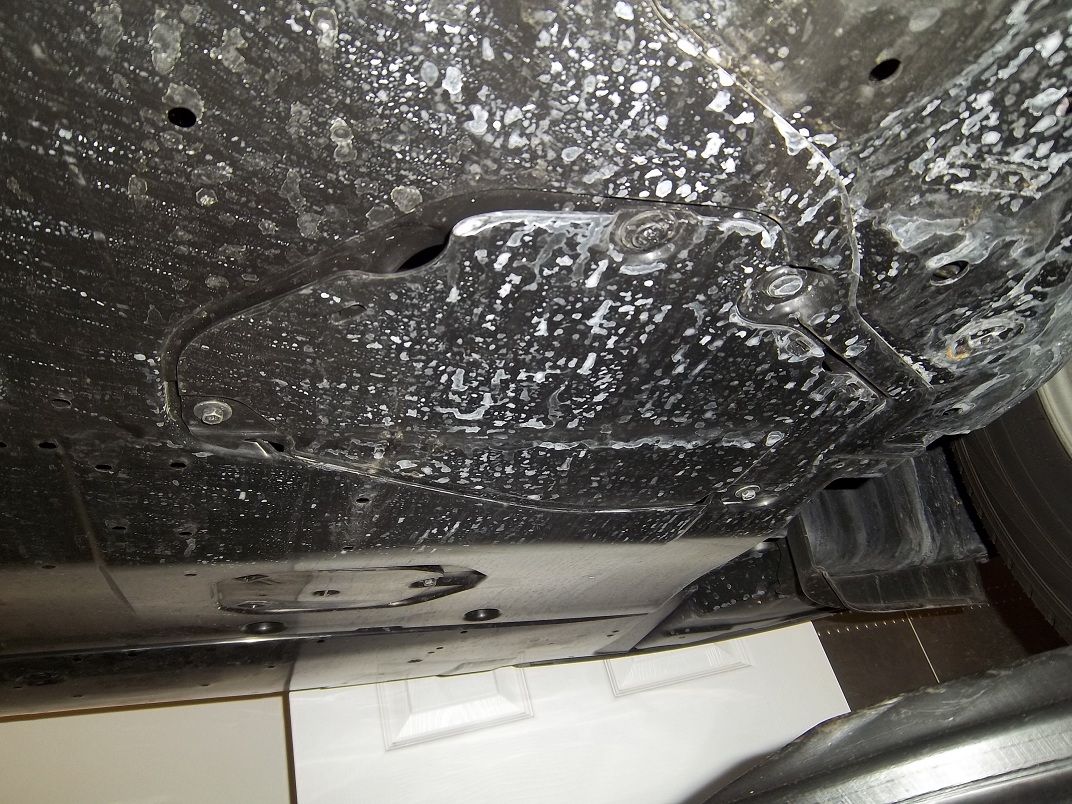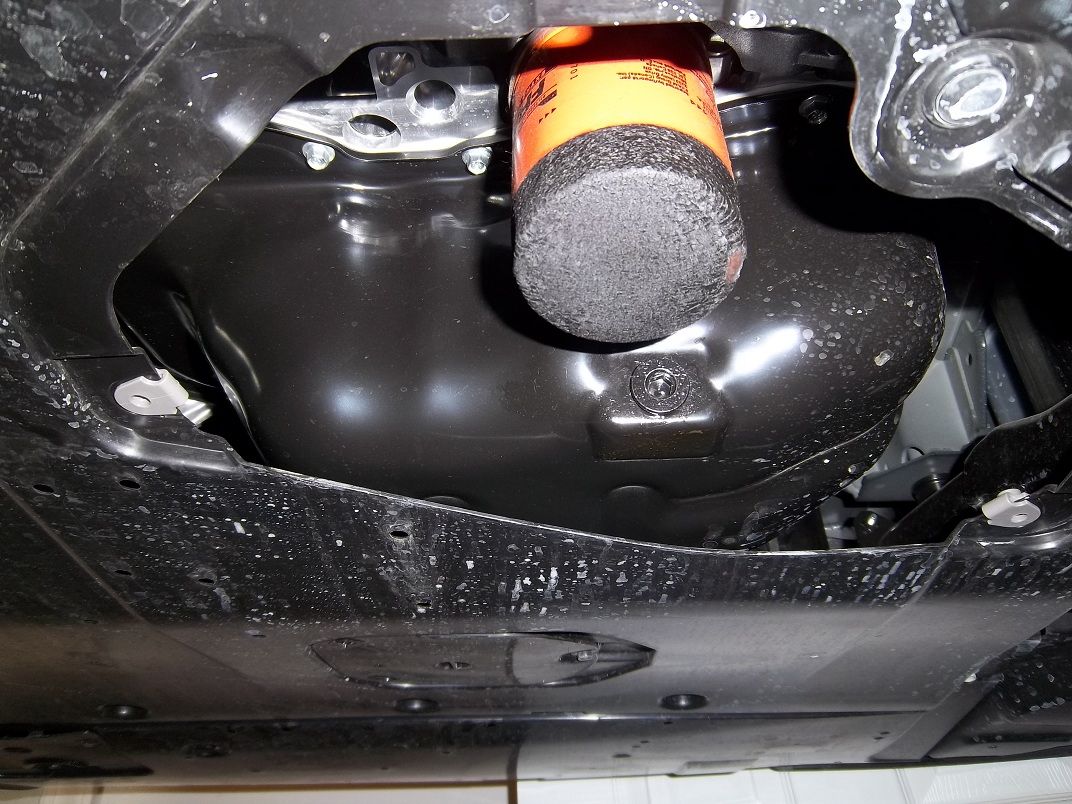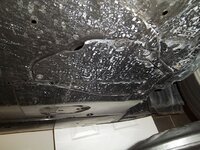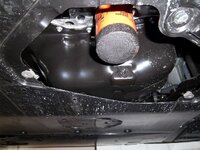Did not search too hard to see if this thread exists. But here I go anyway.
0W20 oil or 5W20 in a pinch. 4.4 quarts. Fram oil filter 6607.
Its the second door from the front in the under cover. It takes two Phillips screws or 10mm sockets AND one fingernail. First pop the plastic pop rivet by pulling down on the center circle and then pull out. Next unscrew the 10mm/Phillips bolts. After that you have to bow the plastic in the center and the door will come down with out breaking the tabs that hold it in place. I recommend using the screw driver on the screws as they only screw into the plastic and can strip very easily.

First remove the filter. Before putting on the new filter remove the 8mm drain plug. (Make sure to wait for all the oil to drain out. do this in the am before the car is driven. That way there is no oil up in the head. Being that it is 0W oil it should take approx one beer to completely drain out.) Snug up the plug. I say snug cause it has a aluminum washer that can get easily distorted if tightened too tight. Then replace with your choice of filter making sure to oil up the gasket before installation and hand tighten.

Reinstall door by bowing the door and sliding in all the tabs into place. next reinstall bolts and pushing in plastic rivet. Next open up oil filler cap and fill 4.4 quarts. Close cap then start car. Stop car and check oil level.
I used 0W20 Mobile 1. I also used Fram gold 7317 and .1 more quart of oil to make up the size of the filter.
0W20 oil or 5W20 in a pinch. 4.4 quarts. Fram oil filter 6607.
Its the second door from the front in the under cover. It takes two Phillips screws or 10mm sockets AND one fingernail. First pop the plastic pop rivet by pulling down on the center circle and then pull out. Next unscrew the 10mm/Phillips bolts. After that you have to bow the plastic in the center and the door will come down with out breaking the tabs that hold it in place. I recommend using the screw driver on the screws as they only screw into the plastic and can strip very easily.
First remove the filter. Before putting on the new filter remove the 8mm drain plug. (Make sure to wait for all the oil to drain out. do this in the am before the car is driven. That way there is no oil up in the head. Being that it is 0W oil it should take approx one beer to completely drain out.) Snug up the plug. I say snug cause it has a aluminum washer that can get easily distorted if tightened too tight. Then replace with your choice of filter making sure to oil up the gasket before installation and hand tighten.
Reinstall door by bowing the door and sliding in all the tabs into place. next reinstall bolts and pushing in plastic rivet. Next open up oil filler cap and fill 4.4 quarts. Close cap then start car. Stop car and check oil level.
I used 0W20 Mobile 1. I also used Fram gold 7317 and .1 more quart of oil to make up the size of the filter.
Attachments
Last edited:


